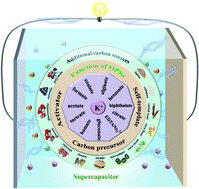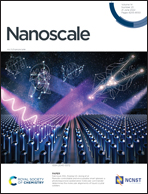Progress in the use of organic potassium salts for the synthesis of porous carbon nanomaterials: microstructure engineering for advanced supercapacitors
Abstract
Porous carbon nanomaterials (PCNs) are widely applied in energy storage devices. Traditionally, PCNs were mainly synthesized by activation and templating methods, which are time-consuming, tedious, corrosive and relatively high cost. Therefore, the development of easier and greener methods to produce PCNs is of great significance. Recently, organic potassium salts (OPSs) emerged as versatile reagents for synthesizing PCNs. The OPS-based synthesis of PCNs can avoid the use of large amounts of corrosive chemical agents. Potassium carbonate generated in situ from the decomposition of OPSs could serve as both a green activation agent and a water-removable template to produce nanopores. Potassium oxide and potassium formed at higher temperature could generate additional porosity, contributing to a highly porous architecture. The carbon-rich organic moiety could function as a carbon precursor and chemical blowing agent. This review aims to elucidate the multifunctionality of OPSs in the synthesis of PCNs and the capacitive performance of the corresponding PCNs. To this end, recent progress on the capacitive performance of PCNs synthesized from OPSs is summarized. This review provides constructive viewpoints for the cost-effective and green synthesis of PCNs with the aid of OPSs for application in supercapacitors.

- This article is part of the themed collections: Nanoscale and Nanoscale Horizons: Carbon-based nanomaterials, Nanoscale 2023 Lunar New Year Collection and Recent Review Articles


 Please wait while we load your content...
Please wait while we load your content...